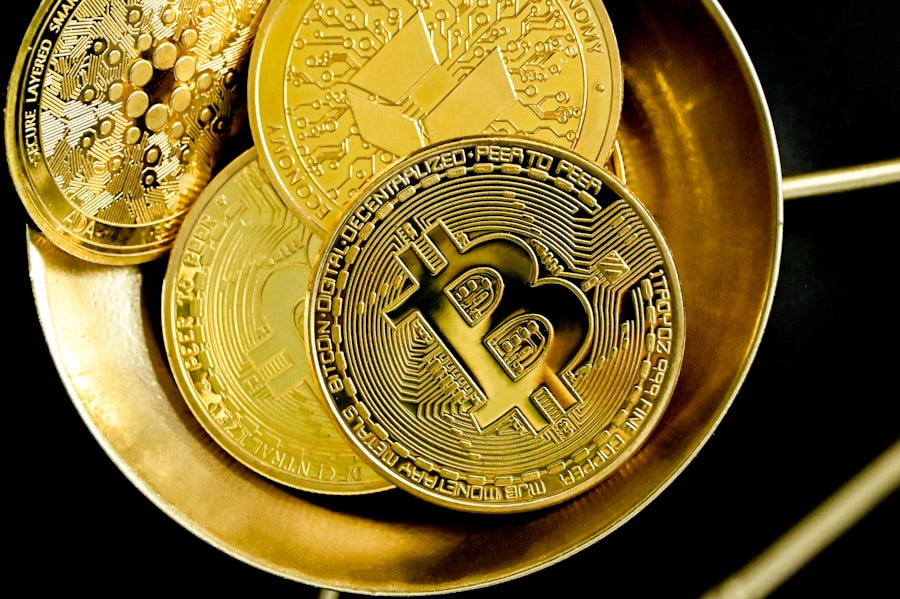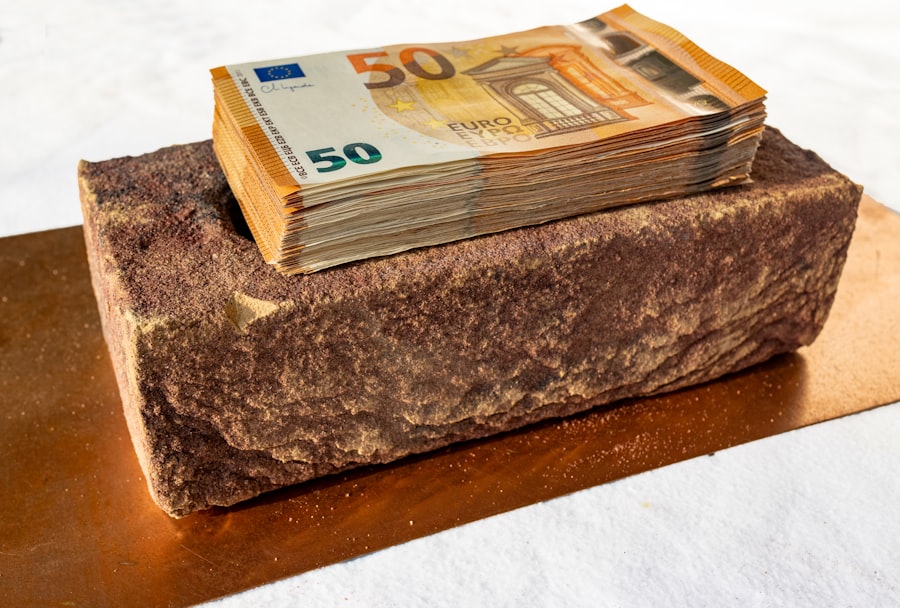Hyperinflation is a term that evokes concern and urgency, as it signifies an extreme and rapid increase in prices, rendering currency almost worthless. When you find yourself in a hyperinflationary environment, the purchasing power of your money diminishes at an alarming rate. This phenomenon often occurs when a government prints excessive amounts of money to cover its debts or stimulate the economy, leading to a loss of confidence in the currency.
As a result, consumers and businesses alike scramble to spend their money before it loses even more value, creating a vicious cycle of rising prices. To truly grasp the implications of hyperinflation, it’s essential to recognize its historical context. Countries like Zimbabwe in the late 2000s and Germany during the Weimar Republic in the 1920s serve as stark reminders of how quickly economic stability can unravel.
In these instances, everyday goods became prohibitively expensive, and people resorted to bartering or using foreign currencies to conduct transactions. Understanding hyperinflation is not just an academic exercise; it’s a crucial step in safeguarding your financial future against potential economic turmoil.
Key Takeaways
- Hyperinflation is a rapid and excessive increase in the price of goods and services, leading to a decrease in the purchasing power of a country’s currency.
- Diversifying assets across different classes can help protect against the negative effects of hyperinflation on a single asset class.
- Investing in real assets such as real estate, commodities, and infrastructure can provide a hedge against hyperinflation.
- Considering foreign investments can help spread risk and provide exposure to economies with lower inflation rates.
- Purchasing inflation-protected securities can provide a guaranteed return that keeps pace with inflation.
Diversification of Assets
One of the most effective strategies to mitigate the risks associated with hyperinflation is diversification of assets. By spreading your investments across various asset classes, you can reduce the impact of inflation on your overall portfolio. This means not putting all your eggs in one basket; instead, consider a mix of stocks, bonds, real estate, and commodities.
Each asset class reacts differently to inflationary pressures, and a well-diversified portfolio can help you weather economic storms more effectively. When you diversify, you also gain exposure to different sectors and markets, which can provide additional layers of protection. For instance, while some industries may suffer during inflationary periods, others may thrive.
By investing in a variety of sectors—such as technology, healthcare, and consumer goods—you can position yourself to benefit from growth opportunities that arise even in challenging economic climates. This strategic approach not only helps preserve your wealth but also enhances your potential for long-term gains.
Invest in Real Assets

Investing in real assets is another prudent strategy when facing hyperinflation. Real assets include tangible items such as real estate, land, and commodities like oil and gold. Unlike paper assets that can lose value due to inflationary pressures, real assets tend to retain their worth or even appreciate over time.
For instance, real estate often increases in value as demand rises and construction costs escalate, making it a solid hedge against inflation. Moreover, real assets provide intrinsic value that paper currencies lack. When you invest in physical commodities or property, you own something that has utility and demand in the marketplace.
By incorporating real assets into your investment strategy, you can create a more resilient portfolio that stands the test of time.
Consider Foreign Investments
| Country | Foreign Investment (in million USD) | Percentage of GDP |
|---|---|---|
| United States | 3,500 | 2.5% |
| China | 2,800 | 3.0% |
| United Kingdom | 1,200 | 4.0% |
In times of hyperinflation, looking beyond your domestic market can be a wise move. Investing in foreign markets allows you to diversify your portfolio geographically and potentially benefit from stronger currencies or more stable economies. Countries with robust economic fundamentals may offer investment opportunities that are less susceptible to inflationary pressures than your home country.
By allocating a portion of your investments to international stocks or bonds, you can hedge against local currency devaluation. Additionally, foreign investments can provide exposure to emerging markets that may be experiencing growth while your domestic economy falters. These markets often present unique opportunities for capital appreciation and can serve as a counterbalance to inflation at home.
However, it’s essential to conduct thorough research and understand the risks associated with foreign investments, including currency fluctuations and geopolitical factors that could impact your returns.
Purchase Inflation-Protected Securities
Inflation-protected securities are specifically designed to safeguard your investments against rising prices. These financial instruments adjust their principal value based on inflation rates, ensuring that your investment maintains its purchasing power over time. One popular example is Treasury Inflation-Protected Securities (TIPS) offered by the U.S.
government. When you invest in TIPS, you receive interest payments that increase with inflation, providing a reliable income stream even during turbulent economic times. By incorporating inflation-protected securities into your investment strategy, you can create a buffer against the erosive effects of hyperinflation.
These securities not only offer protection but also provide peace of mind knowing that your investments are designed to keep pace with rising costs. As you navigate the complexities of hyperinflation, consider allocating a portion of your portfolio to these instruments for added security.
Hold onto Hard Currency

In an environment where hyperinflation is prevalent, holding onto hard currency can be a strategic move. Hard currencies—such as the U.S. dollar, Swiss franc, or euro—are generally considered stable and reliable compared to weaker currencies that may be subject to rapid devaluation.
By maintaining a portion of your assets in hard currency, you can protect your wealth from the ravages of inflation and ensure that you have liquidity when needed. Moreover, hard currencies often serve as a safe haven during times of economic uncertainty. Investors flock to these currencies when they seek stability, which can further bolster their value during inflationary periods.
By diversifying your holdings with hard currency, you position yourself to navigate financial challenges more effectively while maintaining access to global markets.
Monitor and Adjust Investments Regularly
The landscape of investing is ever-changing, especially during periods of hyperinflation. To safeguard your financial future, it’s crucial to monitor and adjust your investments regularly. This proactive approach allows you to stay informed about market trends and economic indicators that could impact your portfolio’s performance.
By keeping a close eye on inflation rates, interest rates, and geopolitical developments, you can make informed decisions about reallocating your assets as needed. Regularly reviewing your investment strategy also enables you to identify underperforming assets or sectors that may be adversely affected by inflationary pressures. If certain investments are not meeting your expectations or are becoming riskier due to changing economic conditions, it may be time to pivot and explore alternative opportunities.
By remaining vigilant and adaptable in your investment approach, you can better position yourself for success in an unpredictable financial landscape.
Utilize Cryptocurrencies
In recent years, cryptocurrencies have emerged as an alternative asset class that some investors view as a hedge against inflation. Digital currencies like Bitcoin and Ethereum offer unique characteristics that set them apart from traditional fiat currencies. For instance, many cryptocurrencies have capped supplies, meaning they cannot be printed at will like government-issued money.
This scarcity can make them appealing during times of hyperinflation when traditional currencies are losing value rapidly. However, investing in cryptocurrencies comes with its own set of risks and volatility. The market can experience significant price fluctuations within short periods, making it essential for you to approach this asset class with caution.
If you decide to incorporate cryptocurrencies into your investment strategy, consider doing so as part of a diversified portfolio rather than relying solely on them for wealth preservation.
Look into Precious Metals
Precious metals like gold and silver have long been regarded as safe-haven assets during times of economic uncertainty and inflation. These metals possess intrinsic value and have been used as stores of wealth for centuries. When hyperinflation strikes and fiat currencies falter, many investors turn to precious metals as a reliable means of preserving their purchasing power.
Investing in precious metals can take various forms—physical bullion, coins, or exchange-traded funds (ETFs) that track metal prices. Each option has its advantages and disadvantages; for instance, physical metals require secure storage but offer tangible ownership, while ETFs provide liquidity without the need for physical storage solutions. Regardless of how you choose to invest in precious metals, they can serve as an effective hedge against inflation and economic instability.
Consider Investing in Collectibles
Collectibles represent another intriguing avenue for investment during periods of hyperinflation. Items such as rare coins, vintage wines, art pieces, or classic cars can appreciate significantly over time and often retain their value even when traditional currencies decline. The market for collectibles is driven by demand among enthusiasts and collectors who are willing to pay premium prices for unique items.
However, investing in collectibles requires careful consideration and expertise in the specific market you’re interested in. Unlike stocks or bonds, collectibles are illiquid assets that may take time to sell at desired prices. Additionally, their value can be subjective and influenced by trends within the collector community.
If you have a passion for a particular type of collectible and are willing to invest time in research and networking within that niche market, this could be a rewarding investment strategy.
Seek Professional Financial Advice
Navigating the complexities of hyperinflation and investment strategies can be daunting on your own. Seeking professional financial advice is an invaluable step toward securing your financial future during uncertain times.
Moreover, financial advisors possess expertise in market trends and economic indicators that may not be readily apparent to individual investors. They can provide insights into asset allocation strategies that effectively mitigate risks associated with hyperinflation while maximizing potential returns. By collaborating with a professional advisor, you gain access to knowledge and resources that empower you to make informed decisions about your investments.
In conclusion, understanding hyperinflation is crucial for anyone looking to protect their wealth during turbulent economic times. By diversifying assets, investing in real assets and foreign markets, purchasing inflation-protected securities, holding hard currency, monitoring investments regularly, utilizing cryptocurrencies, exploring precious metals and collectibles, and seeking professional advice, you can create a robust strategy that safeguards your financial future against the erosive effects of hyperinflation.
In times of economic uncertainty, safeguarding one’s wealth from the ravages of hyperinflation becomes a paramount concern. Strategies such as diversifying investments, holding assets in stable foreign currencies, and investing in commodities like gold are often recommended. For a deeper understanding of these strategies and more insights into protecting your wealth, you can explore this related article that delves into various methods to shield your financial assets from hyperinflationary pressures.
WATCH THIS! The 8 Assets You OWN But the Government CONTROLS (Dollar Collapse Survival)
FAQs
What is hyperinflation?
Hyperinflation is a rapid and excessive increase in the general price level of goods and services in an economy. This results in a sharp decline in the value of a country’s currency, leading to a loss of purchasing power for consumers.
How does hyperinflation affect wealth?
Hyperinflation can erode the value of wealth as the purchasing power of money decreases. Savings, investments, and fixed-income assets can all be significantly devalued during periods of hyperinflation.
What are some strategies for protecting wealth from hyperinflation?
Some strategies for protecting wealth from hyperinflation include investing in assets that tend to retain their value during inflationary periods, such as real estate, commodities, and precious metals. Diversifying investments across different asset classes and currencies can also help mitigate the impact of hyperinflation.
Are there any financial instruments specifically designed to protect against hyperinflation?
Some financial instruments, such as Treasury Inflation-Protected Securities (TIPS) and inflation-indexed annuities, are designed to provide protection against inflation. These instruments adjust their value or payments based on changes in the inflation rate, helping to preserve purchasing power during periods of hyperinflation.
What are the potential risks of hyperinflation on wealth protection strategies?
One potential risk of hyperinflation on wealth protection strategies is the possibility of asset values becoming highly volatile or unpredictable. Additionally, government policies and regulations aimed at controlling hyperinflation can impact the effectiveness of wealth protection strategies.
